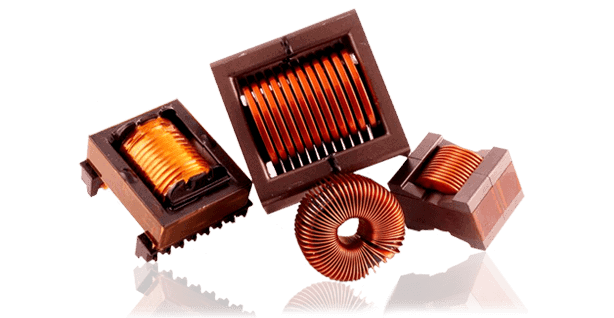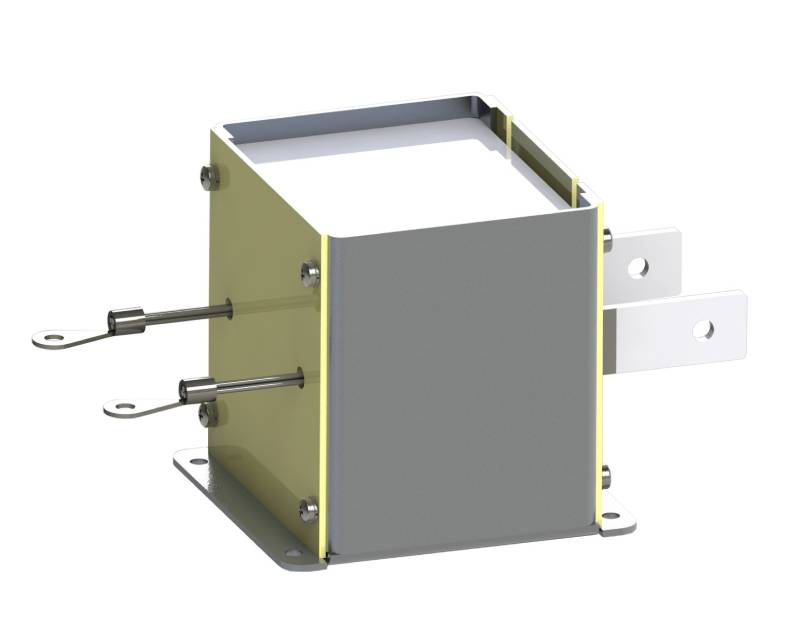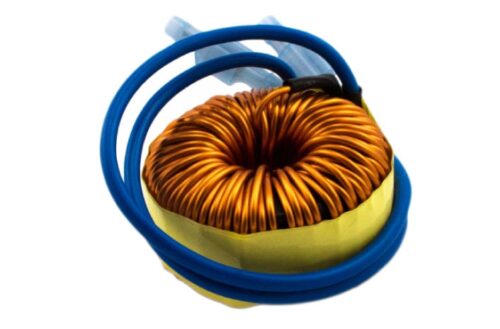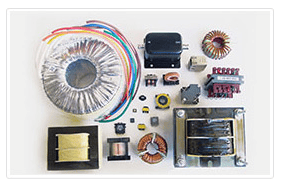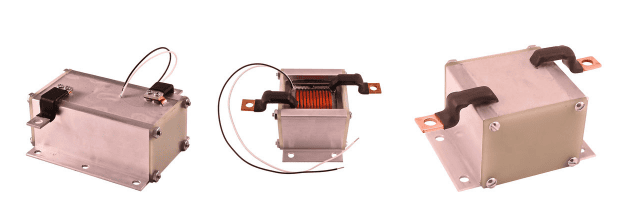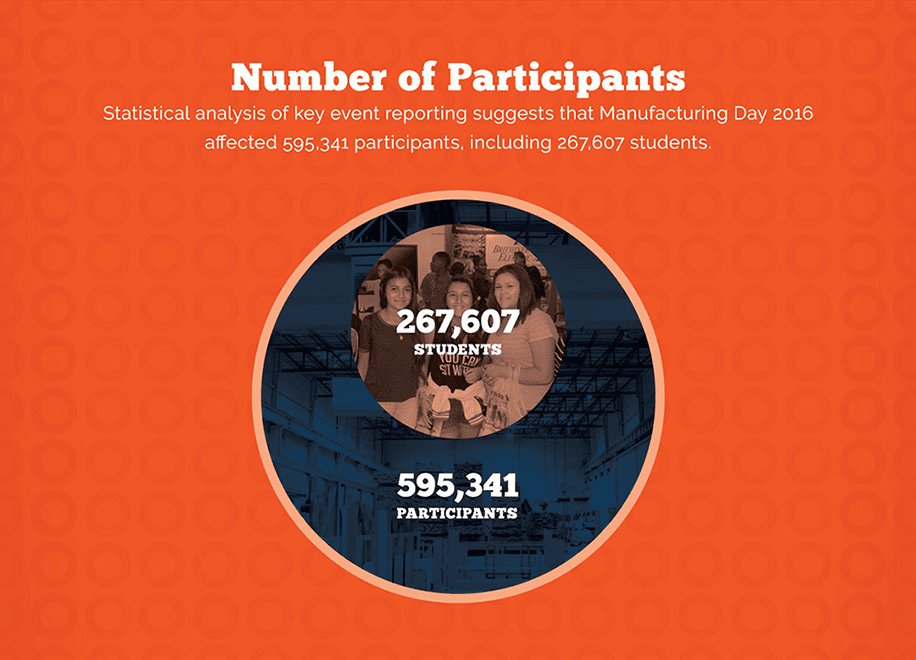Magnetic Components 101: Transformers, Inductors, and Chokes
Leave a Comment
Magnetic components are passive elements that rely on an internal magnetic field to alter electrical current. They play a critical role in many electronic devices, equipment, and systems. Some of the industries that often make use of them include:
- Appliances: Magnetic components play critical roles in both common household and advanced industrial appliances (ranging from refrigerators to telecommunication devices), particularly when it comes to converting AC to DC as well as power line filtering.
- Automotive: Magnetics are found throughout cars, regulating voltage in power supplies for climate control, dashboard display, interior and exterior lighting, and other systems. The advent of electric and hybrid vehicles has increased the range of applications for magnetics in the automotive industry.
- Communications: Magnetic components are used for both low-voltage and high-voltage communication systems, such as radio frequency circuitry in cellphones or conductors in high-voltage transmission systems. Larger transformers are also critical to the telecom infrastructure.
- Computers and Electronics: Many types of magnetics components are found in computers and other personal electronic devices. By selecting optimal components, manufacturers can increase power efficiency, and in certain cases can decrease size.
- Defense: The defense industry’s demand for magnetic components has expanded as surveillance equipment, transport vehicles, and weaponry have become more and more advanced.
In the following article, we provide an overview of magnetic components and the three main types employed by industry professionals—i.e., transformers, inductors, and chokes. Additionally, we cover the product offerings available at MPS Industries.
What Are Magnetic Components?
Depending on their configuration and function, magnetic components can be categorized into the following groups:
- Low-Frequency Magnetic Components: These elements are generally designed for use in applications involving frequencies between 50 to 500 Hz and voltages of 220 to 240 VAC. Typical applications include conveyor systems, HVAC systems, line filtering, motor drives, and uninterrupted power supplies (UPSs).
- High-Frequency Magnetic Components: These elements are designed for frequencies in the kilohertz (kHz) or Megahertz (MHz) range. Typical applications include computers, communication systems, electric cars, and mobile device charging systems.
- Isolated Magnetic Components: These elements protect users from electrical shock in applications where incidental contact may occur. Typical applications include laptop power supplies and wearable medical devices.
- Non-Isolated Magnetic Components: These elements reduce noise or briefly store energy for use in future operations. They are generally used in applications where human contact is less of a concern.
They can also be classified into two main product groups: transformers and inductors. Transformers change the voltage level by stepping it up or down, while inductors introduce resistance to the circuit and store current.
Both products rely on the property of electromagnetic inductance, which was discovered by English scientist and inventor Michael Faraday and American scientist Joseph Henry separately but concurrently in the 1830s. Faraday’s Law, as it is often called, describes how changes in the magnetic environment of a circuit result in the generation of electrical current and, conversely, how an electrical current generates a magnetic field.
Below we provide a more detailed description of transformers and inductors, outlining their function, basic design and construction elements, types available, and key design and selection considerations.
Transformers
Transformers consist of two or more coils of wire that allow for the transference of electrical energy when subjected to a changing magnetic field. They are primarily used when the power within a circuit must be transferred between two different levels. In addition to stepping the voltage up or down, they also function as filters or stabilizers for the circuit’s voltage levels.
Types of Transformers
These magnetic components are available in many designs and configurations, each of which is suitable for different use cases. Some of the most common include:
- Single-Phase Transformers: Single-phase transformers contain two windings, a primary and secondary one. By connecting the two components, they enable the transfer of AC power from one circuit to another.
- Three-Phase Transformers: Three-phase transformers consist of primary and secondary windings that each contain three separate but connected windings. They are generally used for the generation, transmission, and distribution of electrical power in industrial applications.
- Step-Up/Step-Down Transformers: These transformers increase (step-up) or decrease (step-down) the voltage as current flows through them.
- Power Transformers: Power transformers are used for the transmission of higher voltages within and between systems.
- Current transformers: Current transformers are used for measuring or monitoring current for control and/or load centers. They are implemented for current measurement, electrical load monitoring, energy and sub-metering products, network equipment, instruments and sensors, control systems, and green initiatives.
- Isolation Transformers: Isolation transformers regulate high current and voltage levels by separating the primary and secondary windings. This design protects any devices connected to the secondary windings from overload damage. Current transformers and potential (i.e., voltage) transformers are both variations on this design.
Design and Selection Considerations
When designing and selecting a transformer, there are many factors to keep in mind to ensure it functions as intended. Some of the key considerations include:
- Winding Design: The way a winding is coiled around the transformer core significantly affects the component’s efficiency and durability, as well as the resulting transformer type (i.e. flyback, push-pull). There are two types of electrical coils: primary and secondary windings. In a nutshell, primary windings receive power while secondary windings deliver the power. These windings are not electrically connected but share a common core, enabling the transfer of electrical power between the two coils. Voltage and current are directly correlated to the number of the primary and secondary coils’ turns around the core.
- Material: Similar to the design of the winding, the material used for the construction of the winding and insulation can affect the performance of a transformer. Typical winding materials include aluminum and copper, and typical insulation materials include meta-aramid. The material makeup of the transformer core itself enables a successful pathway for magnetic flux. As well, the extent to which a magnetic field can be increased by the core is dependent on the magnetic permeability of the transformer core material. Examples of common transformer core materials include:
- Amorphous Steel Core: ideal for high temperature, high efficiency, or medium frequency transformers; one of the most commonly implemented transformer core materials.
- Solid Iron Core: This core material is able to produce high magnetic fields without iron saturation; DC applications are typical use cases.
- Laminated Silicon Steel/Iron Core: Laminated cores are created by thin sheets of stacked silicon steel or iron, which are coated with an insulating layer to prevent losses of energy via eddy currents in alternating current (AC) components.
- Size: The size of transformer needed depends on the expected load capacity required. Other factors that influence size include future growth expectations, space constraints, and budget limits.
Inductors
Inductors consist of a wire coil or loop wound around a metal core. They allow for the storage of energy and the introduction of resistance to a circuit. As current runs through the circuit, the element stores it in the form of magnetic energy. When the current flow ceases, the magnetic field generates voltage in the conductor.
Types of Inductors
Similar to transformers, inductors are available in many variations to suit different applications, such as:
- Bobbin-Based Inductors: As suggested by the name, these inductors are wound on cylindrical bobbins. They are generally employed in printed circuit boards (PCBs).
- Toroidal Inductors: These inductors have toroidal (ring- or donut-shaped) cores.They typically come at a smaller size and lighter weight – about half the weight and size of more conventional inductors – making them a great choice for smaller power supplies. Toroidal inductors offer stronger magnetic fields and lower electromagnetic interference (EMI), making them ideal for higher-frequency and lower-power applications.
- Multi-Layer Inductors: These inductors feature multiple winding layers, which increase inductance and capacitance capabilities. Multi-layer inductors are commonly found in DC/DC power conversion circuitry within smartphones and wearable devices, for example. The inherent structure of these inductors offers space and cost reductions for the circuit system overall.
- Film Inductors: These thin inductors are used for DC to DC converters in mobile electronic devices, such as smartphones.
- Variable Inductors: Variable inductors allow the magnetic core to be moved, allowing the circuit to “tune” between frequencies.
Design and Selection Considerations
When designing and selecting an inductor, industry professionals rely on some of the same considerations as those for transformers, such as winding design, size, and material. Other factors to keep in mind include series resistance and interference from other devices, both of which may cause operational issues if left unaccounted.
Chokes
Chokes consist of insulated wire coiled around a magnetic core. They are a type of specialized inductor designed to block high-frequency alternating current (AC) while allowing low-frequency direct current (DC) to pass through unhindered, minimizing the risk of noise interfering with system performance.
Types of Chokes
Chokes are available in two variations:
- Common Mode Chokes: These chokes feature two or more coils on a single magnetic core, with each winding positioned in series with the conductors. They are effective at blocking noise in applications involving two conductors with currents that are equal but flowing in opposite directions.
- Differential Mode Chokes: These chokes operate similarly to common mode chokes but generate flux in the opposite direction to cancel noise-causing current. They are ideal for use in applications that require noise filtration from a single conductor.
Design and Selection Considerations
When designing and selecting a choke, key considerations include impedance, frequency, and current requirements. These factors influence the optimal winding design, core, winding, and insulation materials, and mounting method for a given application.
Contact the Magnetic Component Experts at MPS Industries Today
At MPS Industries, we offer an extensive selection of magnetic components suitable for use in a wide range of electronic devices. Our product portfolio includes transformers, inducers, and common mode chokes. By partnering with us for their magnetic component needs, our customers benefit from our:
- Broad product lines
- Custom design capabilities
- Domestic design and manufacturing support services
- Commitment to superior product and service quality
For additional information about our magnetic component offerings, contact us today.

